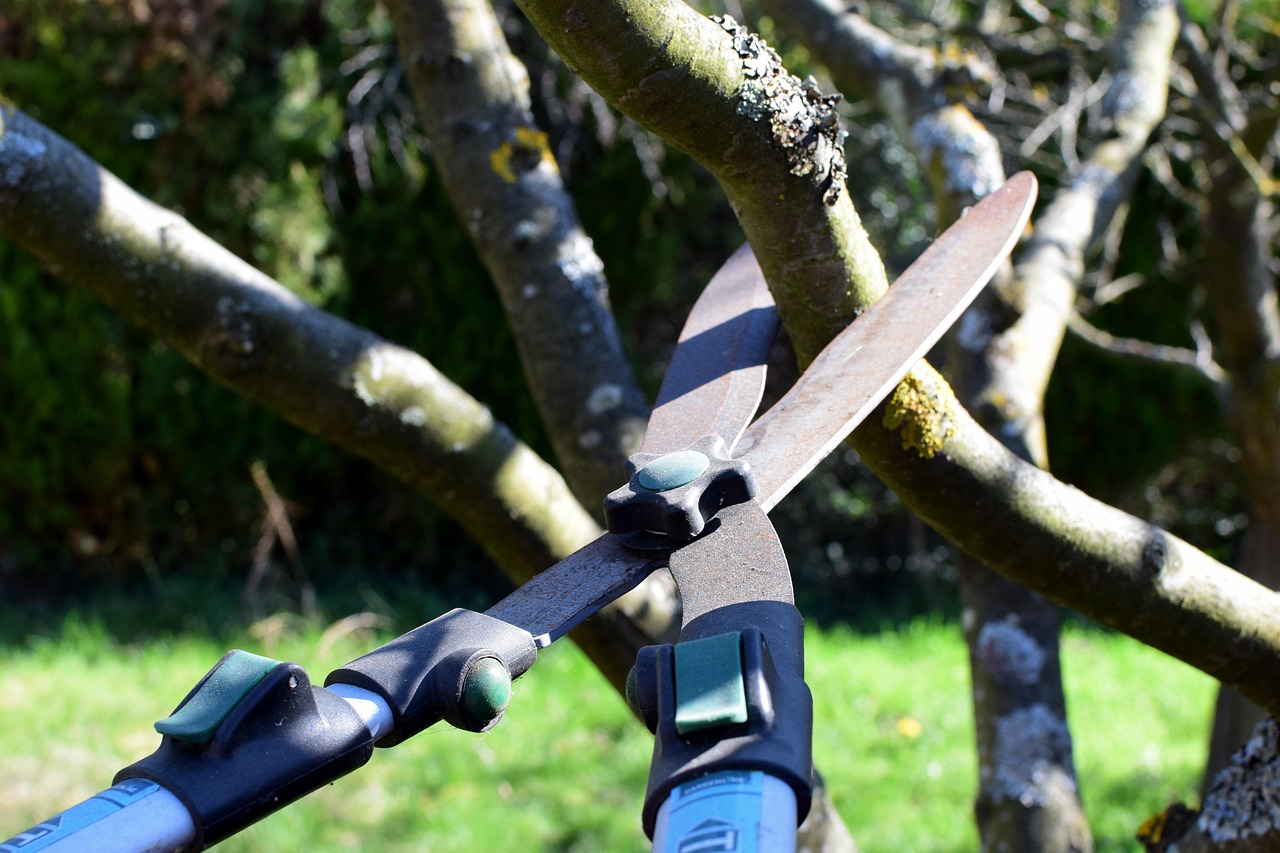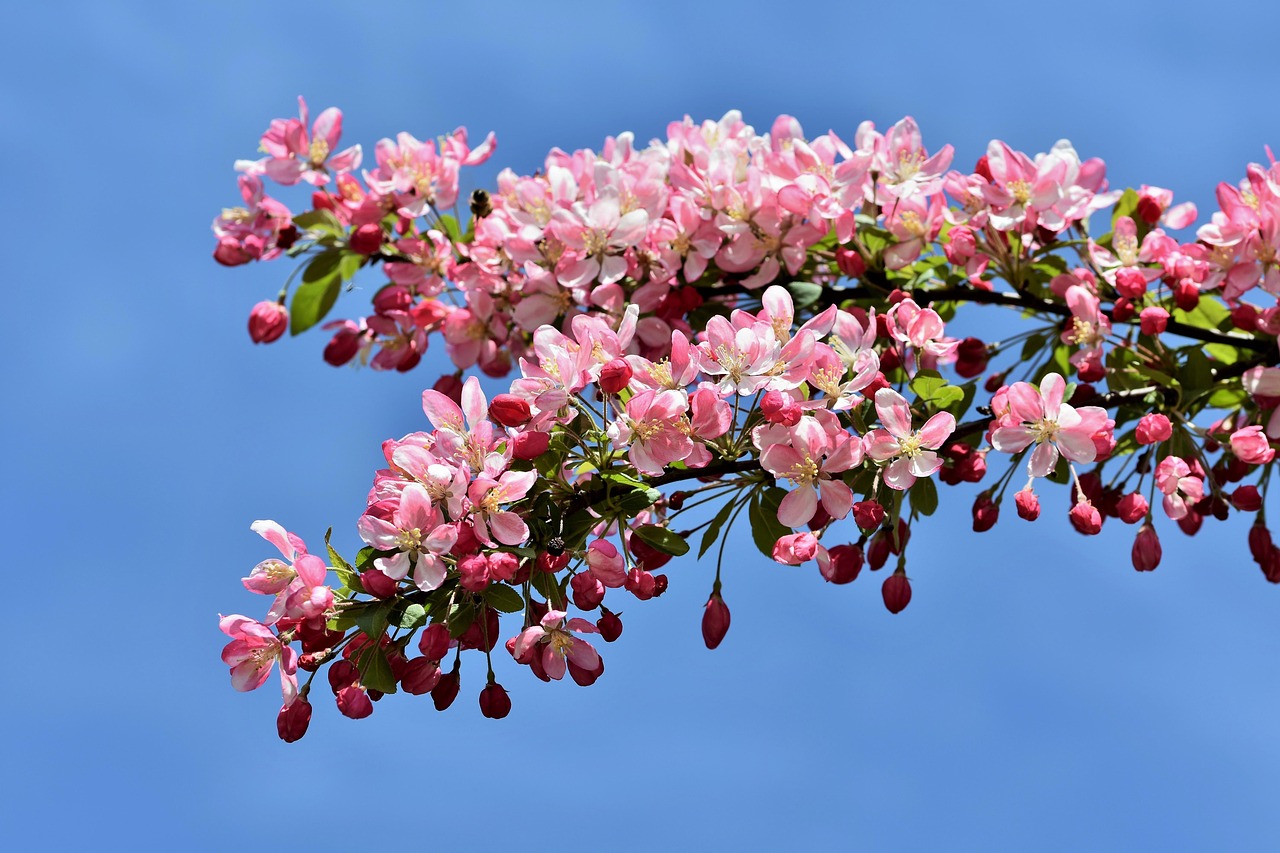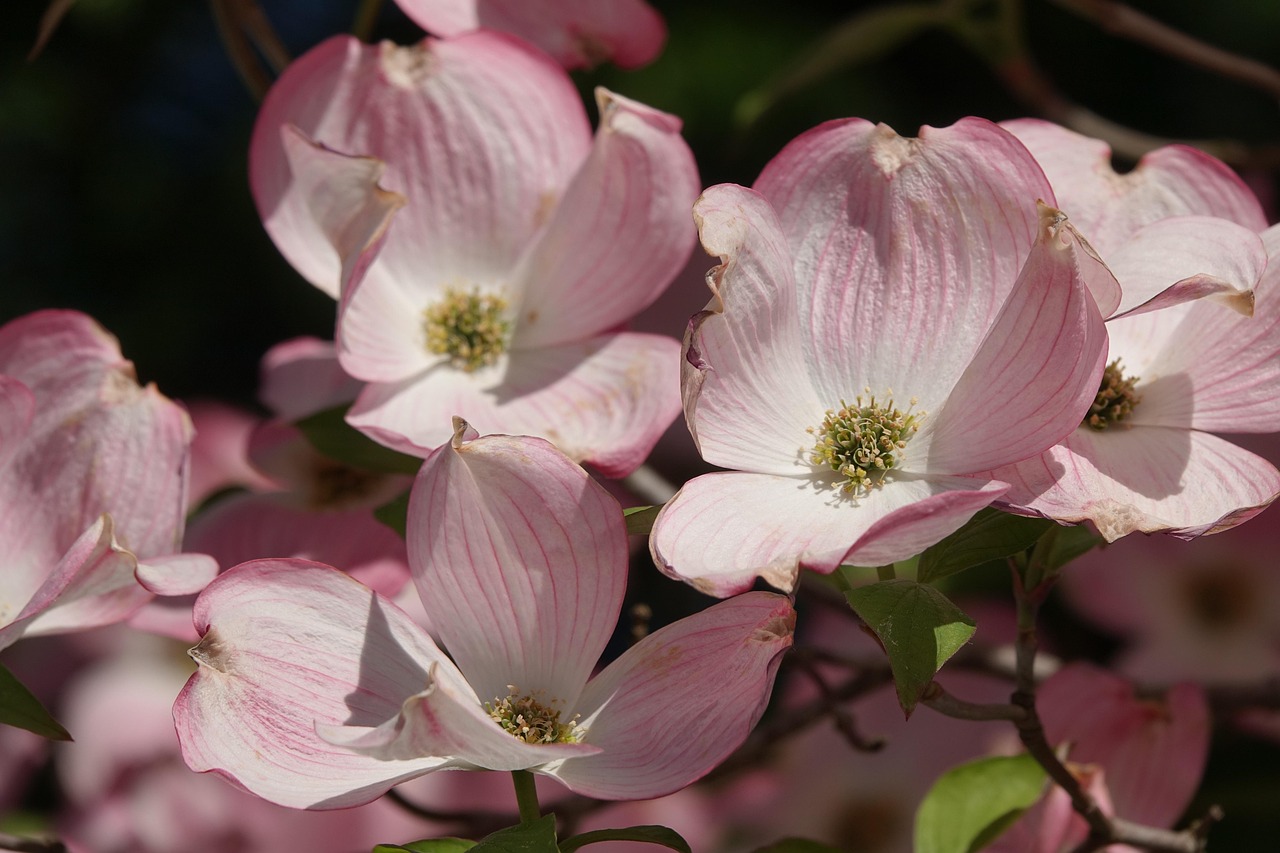Crabapple tree pruning is essential for managing seasonal growth. Proper pruning enhances the tree’s health, improves air circulation, and encourages beautiful blooms. It is best done in late winter or early spring before new growth begins.
Crabapple trees are cherished for their stunning spring blossoms and vibrant fall colors. They are an excellent addition to many landscapes, providing beauty and interest throughout the seasons. However, like all trees, they require periodic maintenance to thrive. Pruning is a critical task that helps maintain the tree’s shape, encourages new growth, and prevents disease. Understanding the right techniques and timing for pruning can significantly impact the health and aesthetic appeal of your crabapple tree.

Before diving into the specifics of pruning, it is essential to understand the anatomy of a crabapple tree. This knowledge will help you make informed decisions about which branches to trim and how to promote healthy growth. A healthy crabapple tree features a strong central leader, well-distributed lateral branches, and a balanced canopy.
Understanding the Growth Cycle
Crabapple trees exhibit a distinct growth cycle that varies with the seasons. In spring, they burst into bloom, showcasing beautiful flowers that attract pollinators. As summer approaches, the tree focuses on leaf development and fruit production. During fall, leaves change color, adding to the visual appeal, while winter marks a period of dormancy.
Knowing this cycle allows gardeners to plan pruning activities effectively. Here’s a brief overview of the growth phases:

| Season | Growth Activity | Pruning Focus |
|---|---|---|
| Spring | Blooming and leaf development | Light trimming post-bloom |
| Summer | Fruit development | Remove any dead or diseased branches |
| Fall | Leaf color change and fruit ripening | Observe tree structure for winter pruning |
| Winter | Dormancy | Major pruning before new growth begins |
The best time to prune crabapple trees is during their dormant season, typically late winter to early spring. Pruning at this time minimizes stress on the tree and promotes vigorous new growth in the following months.
When planning to prune your crabapple tree, it is vital to have the right tools on hand. Here are some essential tools you will need:
- Pruning Shears: Ideal for small branches and general trimming.
- Loppers: Useful for cutting larger branches that are too thick for shears.
- Saw: A small hand saw is necessary for removing larger limbs.
- Gloves: Protect your hands while working.
- Ladder: If your tree is tall, a sturdy ladder may be required.
Pruning Techniques
Effective pruning techniques can significantly enhance the health and appearance of your crabapple tree. Here are some key methods to consider:

Crown Thinning
Crown thinning involves selectively removing branches throughout the tree’s canopy. This technique improves light penetration and air circulation, reducing the risk of fungal diseases. It also helps maintain the tree’s natural shape.
Crown Raising
Crown raising focuses on removing lower branches to elevate the canopy. This technique can improve visibility and access beneath the tree while enhancing its overall aesthetics.
Crown Reduction
Crown reduction is used to decrease the height of a tree or its spread. This technique is particularly useful for keeping your crabapple tree within a desired size and shape while encouraging healthy growth.

Key Considerations Before Pruning
Before you begin pruning your crabapple tree, consider these important factors:
- Tree Health: Ensure your tree is healthy enough to withstand pruning.
- Weather Conditions: Choose a dry day for pruning to avoid spreading diseases.
- Tools Maintenance: Ensure your tools are sharp and clean to make precise cuts.
- Aesthetic Goals: Keep in mind how you want your tree to look post-pruning.
By understanding these principles and techniques, you will be better equipped to manage your crabapple tree’s seasonal growth effectively. Pruning is not just about cutting branches; it is about fostering a healthy environment for your tree to flourish.
When to Prune Your Crabapple Tree
The timing of pruning is crucial for the health and vitality of your crabapple tree. Pruning at the wrong time can lead to excessive bleeding, stress, and even disease. Understanding the best seasons and conditions for pruning will ensure optimal growth and flowering.
Optimal Pruning Seasons
As mentioned earlier, late winter to early spring is the prime time for pruning crabapple trees. However, specific timing can vary based on the climate and region:
- Late Winter: This is usually between February and early March when trees are still dormant. Pruning during this time helps avoid sap loss and allows the tree to heal quickly as new growth begins.
- Early Spring: As buds begin to swell but before they fully open, you can perform light pruning to shape the tree and remove any dead or damaged branches.
- Post-Blooming: After the flowers fade, you can prune lightly to remove any spent blooms and promote healthier growth.
It is important to avoid pruning in late fall or early winter. During this time, the tree is preparing for dormancy, and pruning can stimulate new growth that could be damaged by the cold.
Signs Your Crabapple Tree Needs Pruning
Regular monitoring of your crabapple tree will help you determine when it needs pruning. Here are some signs to look for:
- Dead or Diseased Branches: If you notice any branches that are brown, brittle, or showing signs of disease, they should be pruned immediately.
- Overcrowded Canopy: If branches are crossing each other or growing too close together, thinning will improve air circulation and light penetration.
- Weak Growth: If certain branches appear weak or are not producing leaves or flowers as they should, they may need to be cut back.
- Pest Infestation: If pests are present, pruning may help remove infested areas and prevent further spread.
Safety Precautions for Pruning
Safety should always be a priority when pruning. Proper precautions can prevent accidents and injuries. Here are some essential safety tips:
- Wear Protective Gear: Always use gloves, safety goggles, and sturdy shoes to protect yourself while pruning.
- Use Proper Ladders: If your tree requires climbing, use a stable ladder and ensure it is placed on even ground.
- Avoid Electrical Lines: Be aware of any nearby power lines when using long tools or climbing near the tree.
- Work with a Partner: If possible, have someone assist you while pruning. This provides an extra set of hands and eyes for safety.
Pruning Techniques for Specific Styles
Diverse pruning techniques can achieve different styles and shapes for your crabapple tree. Depending on your landscaping goals, consider these methods:
Espalier Technique
Espalier is a method used to train trees against walls or trellises. This technique allows for unique aesthetics while maximizing space.
- Choose a Structure: Select a wall or trellis that suits your garden style.
- Begin Training Early: Start training young trees by tying branches to the structure.
- Regular Maintenance: Prune regularly to maintain shape and encourage lateral growth.
Bonsai Techniques
If you want to create a miniature version of a crabapple tree, bonsai techniques can be applied. This requires careful pruning and shaping over time.
- Select Small Trees: Start with a young crabapple that has potential for bonsai styling.
- Cultivate Soil Properly: Use well-draining soil suitable for bonsai trees.
- Prune Regularly: Frequent trimming will help maintain the desired size and shape.
Pest and Disease Management During Pruning
Pest and disease management is vital during the pruning process. Ensuring that your tools are clean and that you monitor your tree’s health can prevent issues. Here are some strategies:
- Sterilize Tools: Clean your pruning tools with a solution of bleach or rubbing alcohol between cuts to prevent spreading diseases.
- Inspect for Pests: Look for signs of pests such as aphids or scale insects both before and after pruning. Prompt action can limit infestations.
- Treat Diseases Promptly: If you notice fungal infections or other diseases, treat them with appropriate fungicides or pesticides as necessary.
By incorporating these techniques and considerations into your crabapple tree care routine, you can ensure a healthy and beautiful tree that thrives through every season.
Post-Pruning Care for Crabapple Trees
After pruning your crabapple tree, proper care is essential to ensure it recovers well and continues to thrive. This section covers the steps to take immediately following pruning, as well as ongoing care throughout the growing season.
Watering Practices
Watering is critical for supporting your crabapple tree’s recovery after pruning. Here are some guidelines:
- Deep Watering: Water the tree deeply right after pruning to help reduce stress and promote root health.
- Regular Monitoring: Check the soil moisture regularly, especially during hot, dry spells. Ensure that the soil remains consistently moist but not waterlogged.
- Avoid Overwatering: Be cautious not to overwater, as this can lead to root rot and other issues.
Fertilization Needs
Fertilizing your crabapple tree after pruning can enhance its recovery and stimulate healthy growth. Consider the following:
- Selecting Fertilizer: Use a balanced fertilizer or one specifically formulated for flowering trees. Look for a fertilizer with equal parts nitrogen, phosphorus, and potassium.
- Timing: Fertilize in early spring, just as new growth begins. Avoid fertilizing late in the growing season, as this can encourage new growth that is susceptible to winter damage.
- Application Method: Apply fertilizer according to package instructions. Water the tree well after application to help distribute the nutrients into the soil.
Mulching for Moisture Retention
Applying mulch around your crabapple tree can significantly benefit its health and growth. Here’s how to effectively use mulch:
- Choose the Right Mulch: Organic mulches such as wood chips, shredded bark, or straw work well. These materials break down over time and enrich the soil.
- Application Thickness: Apply a layer of mulch about 2-4 inches thick, ensuring it does not touch the trunk of the tree.
- Benefits of Mulching: Mulch helps retain soil moisture, suppress weeds, regulate soil temperature, and improve overall soil quality as it decomposes.
Monitoring Tree Health After Pruning
Keeping an eye on your crabapple tree’s health after pruning is essential. Regular inspections will help identify any problems early. Here are some aspects to monitor:
Signs of Stress
After pruning, watch for signs that your tree may be struggling:
- Wilting Leaves: If leaves begin to droop or wilt, it could indicate insufficient water or stress from pruning.
- Pest Activity: Keep an eye out for any pest infestations that may appear after pruning, as weakened trees can attract pests.
- Discoloration: Yellowing or browning leaves may suggest nutrient deficiencies or disease.
Pest and Disease Follow-Up
Continue monitoring for pests and diseases even after you have treated them. Here are some follow-up actions:
- Regular Inspections: Check your tree every couple of weeks for any new signs of pests or disease.
- Prompt Action: If you notice any issues, take action quickly. This might include additional treatments or contacting a professional arborist.
- Cultural Practices: Maintain good cultural practices such as proper watering, mulching, and fertilizing to strengthen your tree’s defenses against pests and diseases.
Caring for Crabapple Trees Throughout the Growing Season
The care of crabapple trees does not end after pruning. Continuous attention throughout the growing season is vital for their health and beauty. Here are some ongoing care tips:
Irrigation Practices
Irrigation during dry spells can greatly benefit your crabapple tree:
- Consistent Watering Schedule: Water deeply once a week during dry periods. Adjust based on rainfall and temperature conditions.
- Avoid Surface Watering: Focus on deep watering methods rather than surface watering to encourage deep root growth.
Pest Control Measures
Maintaining pest control measures is vital throughout the growing season:
- Regular Monitoring: Continue inspecting leaves and branches for signs of pests like aphids, spider mites, and caterpillars.
- Natural Predators: Encourage beneficial insects such as ladybugs and lacewings that prey on harmful pests.
- Avoid Broad-Spectrum Pesticides: Use targeted treatments when necessary to protect beneficial insects while managing pests.
Disease Prevention Strategies
Implementing disease prevention strategies can help maintain tree health:
- Mature Trees Inspection: Regularly inspect older trees for signs of diseases like apple scab or fire blight.
- Sufficient Airflow: Ensure that surrounding plants do not obstruct airflow around your crabapple tree to reduce humidity and fungal growth.
- Cleansing Practices: Clean up fallen leaves and debris around the base of the tree to minimize the spread of pathogens.
Caring for your crabapple tree throughout its growing season is key to promoting healthy growth and vibrant blooms. By maintaining consistent watering, pest management, and disease prevention strategies, you can enjoy a lush and flourishing tree year after year.
Seasonal Considerations for Crabapple Tree Care
As you care for your crabapple tree, understanding the seasonal changes and how they impact tree health is crucial. Each season brings unique challenges and opportunities for your tree’s growth and development.
Spring: Awakening and Growth
Spring is a time of rejuvenation for crabapple trees. As temperatures rise, buds begin to swell and flowers emerge. Here are some key considerations for spring care:
- Fertilization: As discussed previously, fertilizing in early spring will supply essential nutrients to support new growth.
- Pest Monitoring: Be vigilant for early signs of pests that may emerge as the weather warms.
- Watering Needs: Young trees may require more frequent watering as they begin to grow new leaves and flowers.
Summer: Maintenance and Monitoring
During summer, your crabapple tree will be in full leaf and may produce fruit. It is essential to focus on maintenance:
- Consistent Watering: Hot weather can lead to increased water needs. Ensure that your tree receives adequate moisture.
- Regular Pruning: Summer is a suitable time for light pruning to remove any dead or diseased branches that may have developed.
- Pest Management: Keep monitoring for pests. Use targeted treatments if necessary while avoiding broad-spectrum pesticides.
Fall: Preparation for Dormancy
As fall approaches, your crabapple tree will start to prepare for winter dormancy. Here are some steps to take:
- Final Watering: Water thoroughly before the first frost to ensure moisture is available during the cold months.
- Leaf Cleanup: Rake up fallen leaves to prevent disease spread and reduce pest habitats around the base of the tree.
- Mulching: A fresh layer of mulch can help protect roots from freezing temperatures and retain soil moisture.
Winter: Dormancy and Protection
During winter, your crabapple tree will be dormant, but care is still necessary:
- Protection from Damage: If heavy snow or ice accumulates, gently remove it from branches to prevent breakage.
- Tool Maintenance: Winter is a great time to clean and sharpen your pruning tools for the upcoming growing season.
- Planning Ahead: Use this time to assess your tree’s health and plan any necessary pruning or care for the next year.
Final Thoughts
Caring for a crabapple tree requires ongoing attention and commitment. By understanding the needs of your tree throughout the seasons, you can encourage healthy growth, vibrant blooms, and fruitful harvests. Regular pruning is a vital aspect of this care, not only shaping the tree but also promoting its overall health and resilience against pests and diseases.
The combination of proper timing, effective techniques, and diligent maintenance will ensure that your crabapple tree flourishes in your landscape. Remember that each tree is unique, and observing its specific needs will guide you in providing the best care possible. With patience and dedication, your crabapple tree can become a stunning focal point in your garden for years to come.
By investing time in understanding the intricacies of crabapple tree care, you not only enhance your gardening skills but also contribute to a healthier environment. Enjoy the beauty these trees bring in every season while cultivating a thriving ecosystem around them.
